Lesson 4) British Wizarding Villages II
Good day, young ones! Welcome back. Today, we will be covering the second half of our lessons on British wizarding villages, specifically mentioning Ottery St. Catchpole, Tinworth, and Upper Flagley. This (plus the three villages we covered last week) is not an exhaustive list of every single wizarding village in the United Kingdom. However, it does hit a lot of the “hot spots” that are better known. Since populations can fluctuate, it’s not entirely logical to cover every single one, as there may be many new ones in ten years (and many wizarding villages with smaller populations may have dropped off the official list). Without any further ado, though, let’s begin looking at our towns and cities for this lesson.
I’ve brought this map to help illustrate the different areas (or, specifically, counties) where these cities and towns are. The three counties we’ll be looking at today are Cornwall, Devon, and Yorkshire, if you’d like to take a moment to glance over the map and familiarize yourself with their general locations.
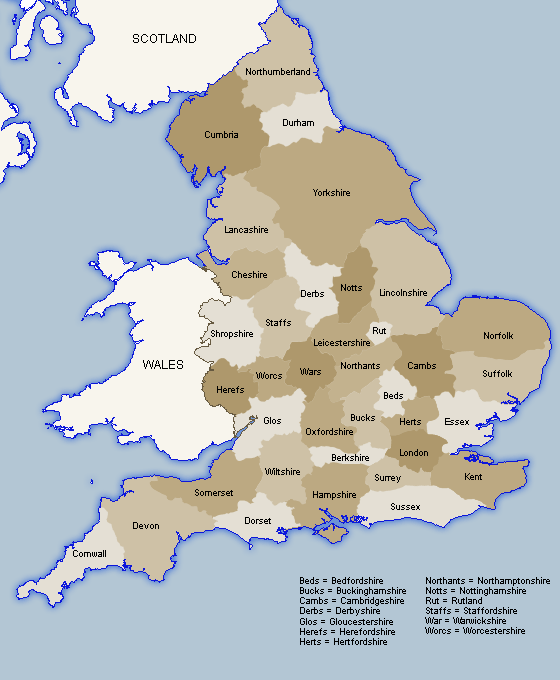
Ottery St. Catchpole
In 1693, after the International Statute of Secrecy was put into effect, several wizarding families sought the support and security of living in a largely magical community, and thus established Ottery St. Catchpole. While still not an all-magical wizarding community, this area usually boasts a rather high percentage of magical families. It is located in Devon, England in the southern tip of England just below Wales.
As you can see from the map, Devon is a bit cut off from the rest of England in the “tail” of the country, which makes it more attractive for magical persons to settle there in large numbers. Another point in its favor is that Muggles of Devon attempted to burn fewer witches than those in many other parts of the country, and therefore already had a higher prevalence of magical folk in their population. Because of this (or perhaps because the people of Devon have become accustomed to unknowingly living among Muggles), many things that outsiders would consider odd (such as strange architecture that looks like the handiwork of a drunken 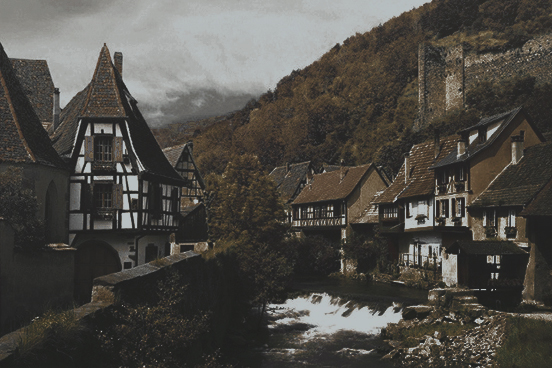 bricklayer, unexplained noises, and funny bouts of weather) don’t make any of the townspeople bat an eye.
bricklayer, unexplained noises, and funny bouts of weather) don’t make any of the townspeople bat an eye.
There are quite a few well-known wizarding families in Ottery St. Catchpole, namely the Fawcetts, Scamanders, Trebonds, and Weasleys, though this only scratches the surface. Ottery St. Catchpole remains one of the most highly populated wizarding villages in the UK to this day, and likely will for many years to come.
Tinworth
Just south of Devon County and Ottery St. Catchpole lies Cornwall, a county even further down on the southwestern tip of England. In Cornwall County are many coastal towns, large and small, but the one we are focusing on today is Tinworth. This town has been around almost as long as Ottery St. Catchpole and was established right after the International Statute of Secrecy was signed. Also similar to Ottery St. Catchpole, the locals in Tinworth are much more unfazed by strange happenings than your average Muggle for various reasons. While not as popular among the magical community, it does have certain draws that make it desirable, such as its coastal location and being quite cut off from the rest of the world. However, these positives are, in some ways, negatives.
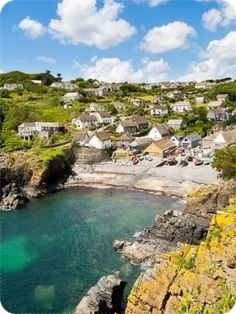 Muggles like the area for the same reasons as well, which means that Tinworth is not entirely made up of the same families that have lived in the same houses for years. Thus, while the more established Muggle families are used to our oddities, new celebrities moving to the seaside for the summer and tourists are not.
Muggles like the area for the same reasons as well, which means that Tinworth is not entirely made up of the same families that have lived in the same houses for years. Thus, while the more established Muggle families are used to our oddities, new celebrities moving to the seaside for the summer and tourists are not.
More, wizarding families will often choose this as a vacation spot as well and bring their children, who are not yet completely able to control their magic. Naturally, this often results in accidental magical outbursts, some of which are sometimes witnessed by Muggles. Tinworth has had its fair share of Ministry coverups for just this reason, though fortunately Muggles’ propensity to explain away perfectly logical magical events helps as well.
Some notable historical (and modern day) Tinworthians are famous arithmancer Bridget Wenlock, as well as Celestina Warbeck and the Tugwoods, including Peregrin Tugwood, the current power behind his family’s potion fortune. Owing to a need for more discretion, most wizarding inhabitants are a bit better at blending in, which Ms. Warbeck and Mr. Tugwood exemplify. However, some do not. Namely, those like Ms. Wenlock, who caused quite a stir during her lifetime there.
A proponent of the theory that the number seven had immense magical properties, Bridget Wenlock was very serious about her studies -- though less so about where she wrote her notes. Frequently she would jot things down on envelopes, posters on buildings, tablecloths, and more. However, she would frequently lose said notes, or forget where she put them down, which, as you can see from a snippet of her work, would be quite problematic to be left lying around in plain sight among Muggles.
“The number seven can be found everywhere throughout the wizarding world...The age in which magic reveals itself to rightful witches and wizards...seven days before the moon… seven phases of the potion… seven classes of magic. The perfect number… divisible.... Magical.”
During Wenlock’s life, the whole of Tinworth was littered with strange parchments and pieces of paper. Which usually resulted with Wenlock herself running around after them trying to find her notes (and make sure they didn’t fall into Muggle hands). Fortunately, she was dismissed as merely an eccentric, by the Muggles in the town. It also helped things that Wenlock insisted on writing all her notes upside down, backwards, and in extremely appalling handwriting (not to mention in invisible ink). All-in-all, Ms. Wenlock managed to go through life without uncovering the magical world, but her close calls certainly kept the Ministry on its toes.
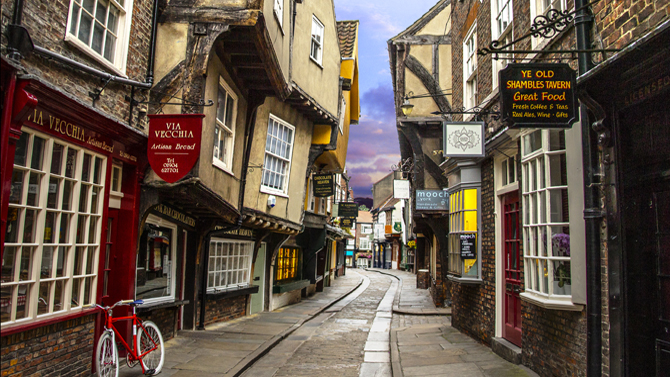 Upper Flagley
Upper Flagley
Finally we have Upper Flagley, which, like many other wizarding villages mentioned, is only partially magical. Here wizarding families haved live amongst their Muggle neighbours in Yorkshire, England since the late 1600s. Upper Flagley is actually one of the longest-lasting and notable wizarding villages for the past 1000 years, trailing just behind Godric’s Hollow and Hogsmeade. The village was officially recognized after the ISoS was signed and because of its rather high magical population, promises to be on record for many more years to come.
Unlike Ottery St. Catchpole and Tinworth, which are both located at the very southwest extreme of the country, Upper Flagley (as its name might suggest) is up in the north country. Most of the wizarding families who chose to live in Upper Flagley did so as part of a desire for a close-knit community, which the village definitely delivers. Upper Flagley is a small village consisting of just about 1,000 magical residents. However, having close communication and interaction with your neighbours (Muggle or magical) increases the risk of being noticed if practicing magic. Fortunately, though, in Upper Flagley, Muggles have never bothered to dig deeper to find the magical roots there. The few magical families that live here are mostly very well-established (meaning that their family has lived there for quite some time, rather than being famous), and some of the most notable names are the Smiths, the McKinnons, and the Morgans.
Over the last two lessons, we’ve talked about how some villages are officially recognized, while others are not. However, we haven't talked in any detail about the process. Some of this will be discussed when we look at the signing and ratification of the International Statute of Secrecy later on, but it’s a good idea to give you at least a little bit of background. As they have ever since 1692, the Ministry sends out individuals to take a census of magical persons in each town, city, and village. These numbers are then compared with the overall population to see if they meet the minimum requirements for official recognition, and all qualifying towns are listed in the yearly census report. These reports, which are available publicly, can serve as a tool for wizarding families who wish to move into an area heavily populated by their own kind. While many do not care one way or another and settle down scattered among many Muggle citizens, these methods make it possible for the average wizarding family to have an option.
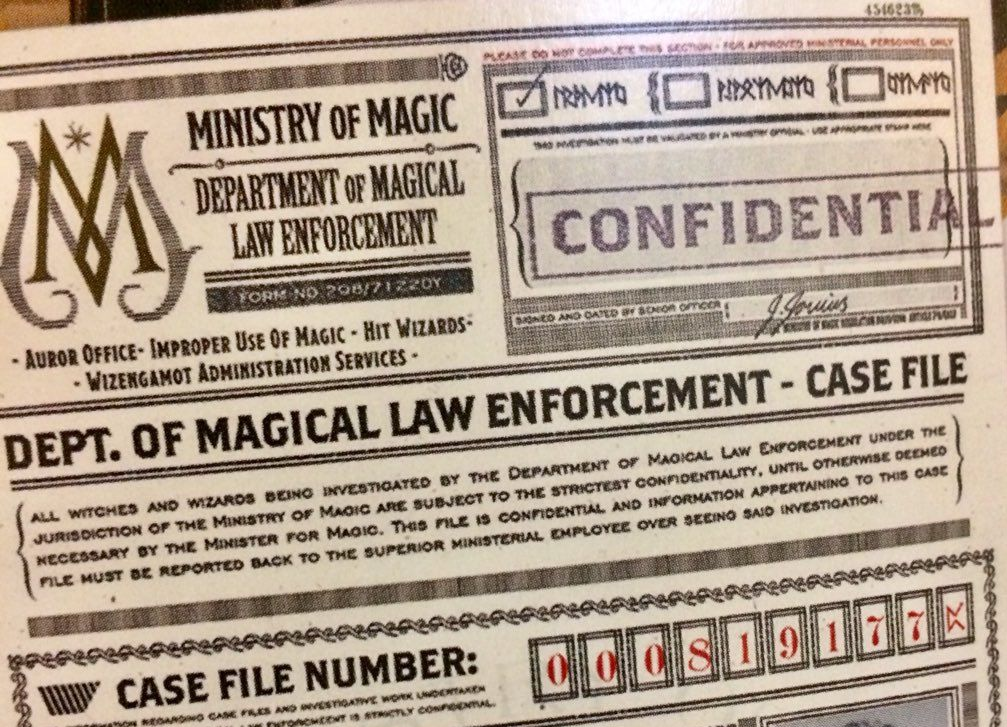 Of course, while taking this census, Ministry workers (who belong to the Ministerial Wizarding Register Department) must be discreet, but after these many decades, there are many tried and true methods they use that can help them determine whether a home’s occupants are magical or not even before they knock on the door. Firstly, they are able to access any pertinent files, records, or information via the Ministry of Magic, such as the Improper Use of Magic office’s yearly records of troublemakers, as well as their files containing all underage witches and wizards who have the Trace, as being on either of these lists immediately indicates that a residence is home to a magical family. Additionally, the department has constructed incredibly useful files, records, and maps of their own that track the location of wizarding residences from year-to-year, which does alleviate most problems.
Of course, while taking this census, Ministry workers (who belong to the Ministerial Wizarding Register Department) must be discreet, but after these many decades, there are many tried and true methods they use that can help them determine whether a home’s occupants are magical or not even before they knock on the door. Firstly, they are able to access any pertinent files, records, or information via the Ministry of Magic, such as the Improper Use of Magic office’s yearly records of troublemakers, as well as their files containing all underage witches and wizards who have the Trace, as being on either of these lists immediately indicates that a residence is home to a magical family. Additionally, the department has constructed incredibly useful files, records, and maps of their own that track the location of wizarding residences from year-to-year, which does alleviate most problems.
But I’m starting to go on and on a bit, aren’t I? I apologize, I find the inner workings of the Ministry quite fascinating, though my students do not always agree. We’ll stop here for now and I’ll see you for your next lesson, where our topics turn away from the here and now (and also away from stuffy Ministry business), and turn towards tales and stories. We will be attempting to parse fact from fiction in a discussion of Merlin, King Arthur, and several witches and wizards who lived during this turbulent time. To help me in doing so, there will be a guest lecturer coming in to provide their expertise on the matter.
As a final note, your essay this week is optional, but is a good look at the length requirements that will eventually be expected of you mandatorily! You also have a short assignment about the content covered in the lesson. Best of luck!
Original lesson written by Professor Autumn Maddox
Image credits here, here, here, here, and here
- HOM-101
Enroll
-
Your (Wizarding?) Origin
Essay -
Wizarding Villages: Part Two
Assignment
-
Lurkelly Leikeze
Head Student
-
Dane Lautner
Professor's Assistant


